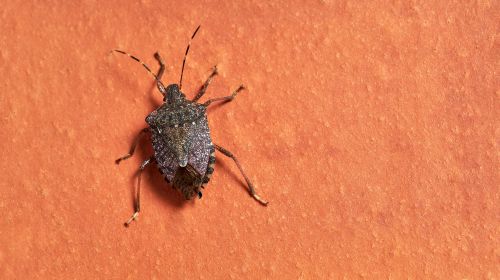Hantavirus spreads to humans through contact with infected rodents. In most cases, an infection goes unnoticed or causes flu-like symptoms. How you can protect yourself from infection.
- © Getty Images/Andyworks
Quick overview: Frequently asked questions and answers
How does the Hantavirus manifest itself? In most cases, an infection with hantaviruses does not cause any symptoms. If symptoms occur, they are often fever, pain and a drop in blood pressure. This is often accompanied by kidney dysfunction.
Is Hantavirus curable? There is currently no medication; the disease heals on its own. The therapy only serves to relieve symptoms and restore healthy kidney function.
How can you become infected with the hantavirus? The viruses are transmitted via saliva, urine and feces of infected rodents such as bank voles. Person-to-person infection is not possible with the virus types common in Europe.
Article contents at a glance:
What is Hantavirus?
Hantaviruses are widespread all over the world and cause illnesses of varying severity depending on the type of virus. The virus gets its name “Hantaan” from the Korean border river Hantan, where several thousand soldiers became seriously ill during the Korean War in the early 1950s.
The pathogens are transmitted to humans via rodents such as mice and rats, in Germany primarily via the bank vole and the fire vole. Transmission occurs via bites or contact with animals and their excretions. Inhaling dust mixed with excretions can also lead to infection.
The pathogens occurring in Germany (Puumala virus, Dobrava-Belgrade virus) do not spread from person to person. The incubation period for hantaviruses is two to four weeks, although in rare cases it can be between five and sixty days.
Good to know: In Germany, an average of 1.3 out of 100,000 residents suffer a hantavirus infection (nephropathia epidemica) per year, more than two thirds of whom are men. More than half of them are between 30 and 49 years old. The Hantavirus is notifiable in Germany.
Hantavirus infection: causes and risk factors
Since hantaviruses are transmitted via the saliva, urine and feces of infected rodents, groups of people who have direct contact due to their living or working conditions are particularly at risk. These include, for example, employees in agriculture or forestry or laboratory staff.
But there is also an increased risk of contact with the hantavirus when working in sheds, basements, attics or other places where mice are often found.
Hantavirus: Makes you sick from mouse droppings
Symptoms of a Hantavirus infection
A large proportion of illnesses go undetected or with symptoms that are so unspecific that the virus is not recognized. If symptoms appear, they usually appear two to four weeks after the infection and are similar to the symptoms of flu.
The clinical picture includes:
The virus types common in Europe and Asia can also lead to hemorrhagic fever with renal syndrome (HFRS): This leads to bleeding and kidney dysfunction, including kidney failure.
The virus species common in North and South America, on the other hand, can cause Hantavirus-induced cardiopulmonary syndrome (HCPS), which can lead to severe lung problems and is fatal in 40 to 50 percent of cases.
Diagnosis of Hantavirus infection
Hantavirus infection is usually diagnosed based on symptoms and examination of a blood sample in the laboratory. The pathogen can only be detected in the first few days of the disease, so diagnosis is made by detecting antibodies against the viruses.
Therapy: How is a hantavirus infection treated?
In most cases, a hantavirus infection heals on its own – so therapy aims to alleviate the symptoms, normalize kidney function and prevent complications. Physical rest and sufficient fluid intake are advisable during this phase.
In rare cases of severe disease, a hospital stay for dialysis (with HFRS) or ventilation (with HCPS) may be necessary.
Course and prognosis
In Germany, mortality is only 0.1 to 0.9 percent, depending on the virus type. A majority of those affected develop temporary kidney dysfunction as the disease progresses, but this usually does not leave any long-term damage. Around 23 percent of those affected have persistent high blood pressure 1.5 years after diagnosis.
Anyone who has been infected with hantaviruses will probably remain immune to the corresponding virus type for life.
Prevention: How can an infection be prevented?
There is currently no vaccination against hantaviruses. The best protection is therefore to avoid contact with infected rodents and their excretions. The following measures are recommended:
Fight mice and rats in and around living areas (if there is a severe infestation, contact professionals)
Avoid the development of dust in contaminated areas (for example by moistening the soil)
Wear respirators and gloves when handling dead rodents or when dust is generated in contaminated areas
Moisten excretions and dead animals with commercially available cleaning products (before disposal)
Wash clothes immediately after cleaning, take a shower and wash your hair


